Zachary F. Fisher
Structured Estimation of Heterogeneous Time Series
Nov 15, 2023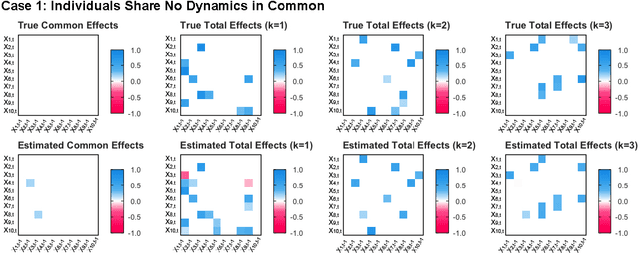

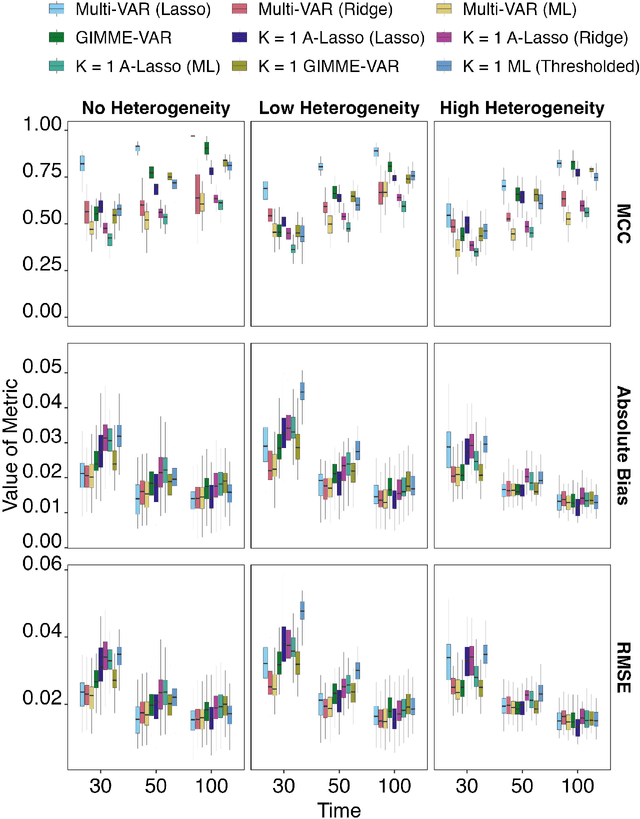
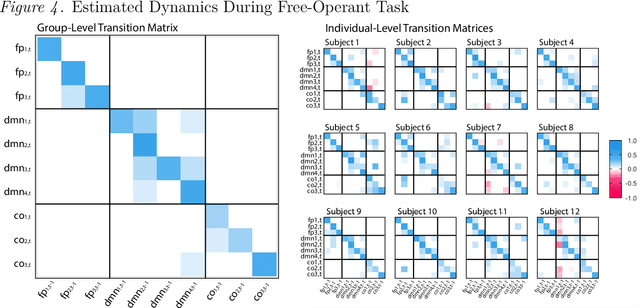
Abstract:How best to model structurally heterogeneous processes is a foundational question in the social, health and behavioral sciences. Recently, Fisher et al., (2022) introduced the multi-VAR approach for simultaneously estimating multiple-subject multivariate time series characterized by common and individualizing features using penalized estimation. This approach differs from many popular modeling approaches for multiple-subject time series in that qualitative and quantitative differences in a large number of individual dynamics are well-accommodated. The current work extends the multi-VAR framework to include new adaptive weighting schemes that greatly improve estimation performance. In a small set of simulation studies we compare adaptive multi-VAR with these new penalty weights to common alternative estimators in terms of path recovery and bias. Furthermore, we provide toy examples and code demonstrating the utility of multi-VAR under different heterogeneity regimes using the multivar package for R (Fisher, 2022).
Penalized Estimation and Forecasting of Multiple Subject Intensive Longitudinal Data
Jul 09, 2020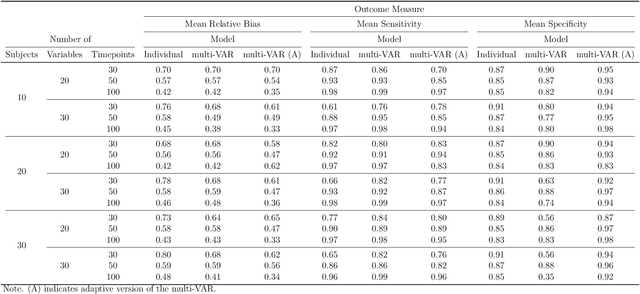

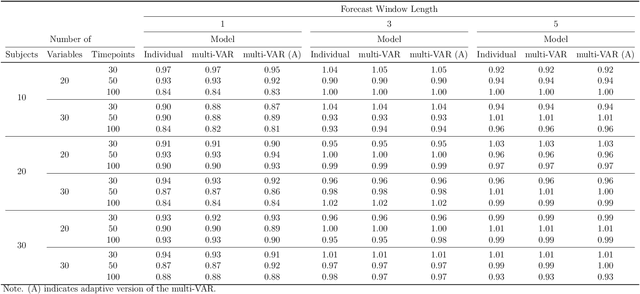
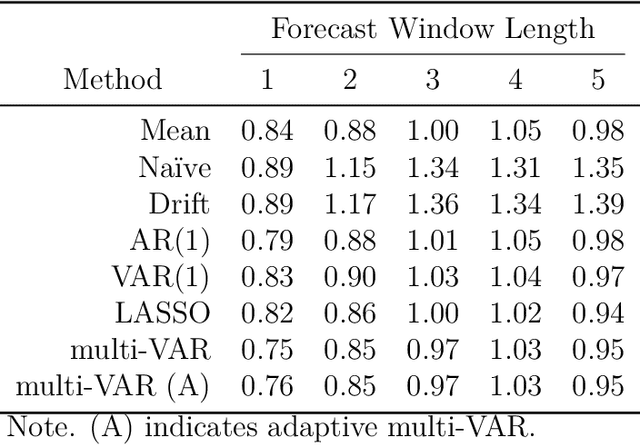
Abstract:Intensive Longitudinal Data (ILD) is an increasingly common data type in the social and behavioral sciences. Despite the many benefits these data provide, little work has been dedicated to realizing the potential such data hold for forecasting dynamic processes at the individual level. To address this gap in the literature we present the multi-VAR framework, a novel methodological approach for penalized estimation and forecasting of ILD collected from multiple individuals. Importantly, our approach estimates models for all individuals simultaneously and is capable of adaptively adjusting to the amount of heterogeneity exhibited across individual dynamic processes. To accomplish this we propose proximal gradient descent algorithm for solving the multi-VAR problem and prove the consistency of the recovered transition matrices. We evaluate the forecasting performance of our method in comparison with a number of benchmark forecasting methods and provide an illustrative example involving the day-to-day emotional experiences of 16 individuals over an 11-week period.
 Add to Chrome
Add to Chrome Add to Firefox
Add to Firefox Add to Edge
Add to Edge